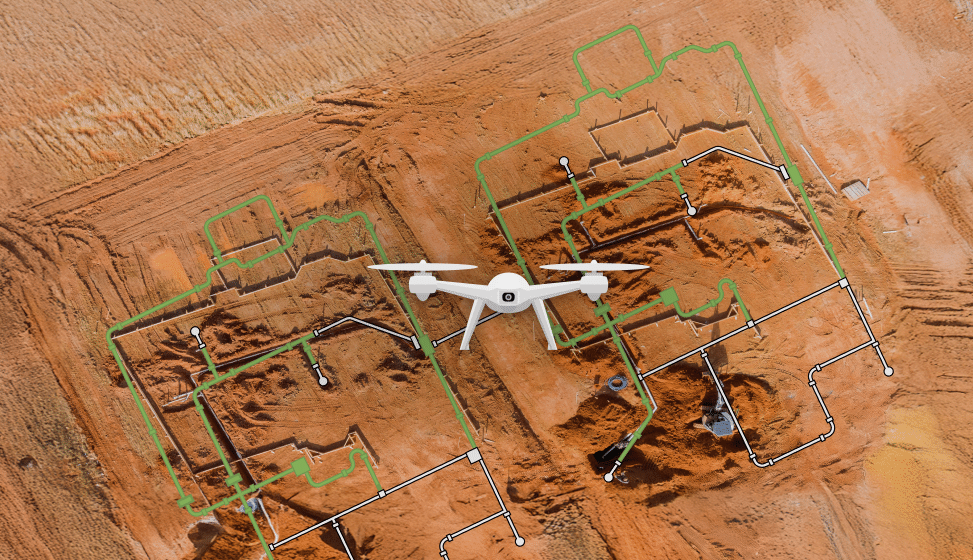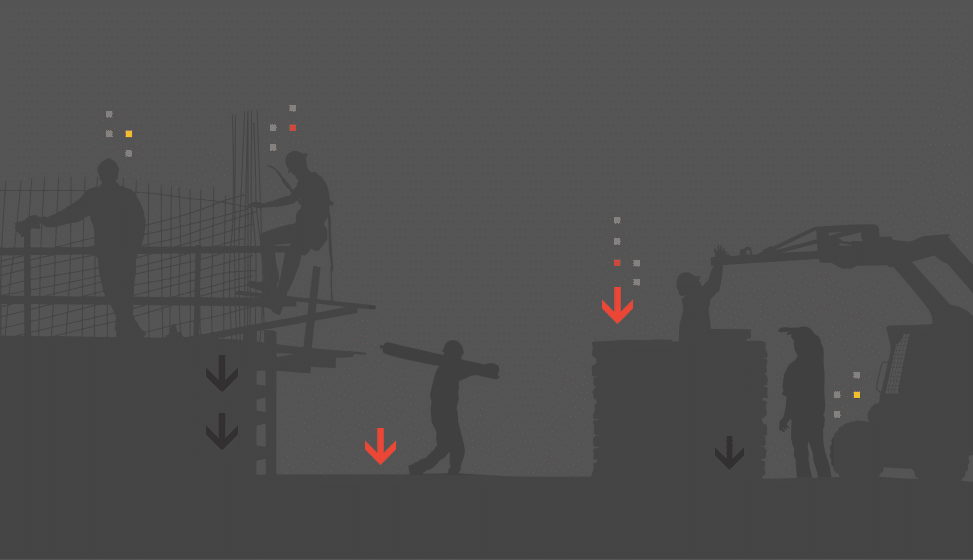Return visits are killing your project flow – here’s what you can do
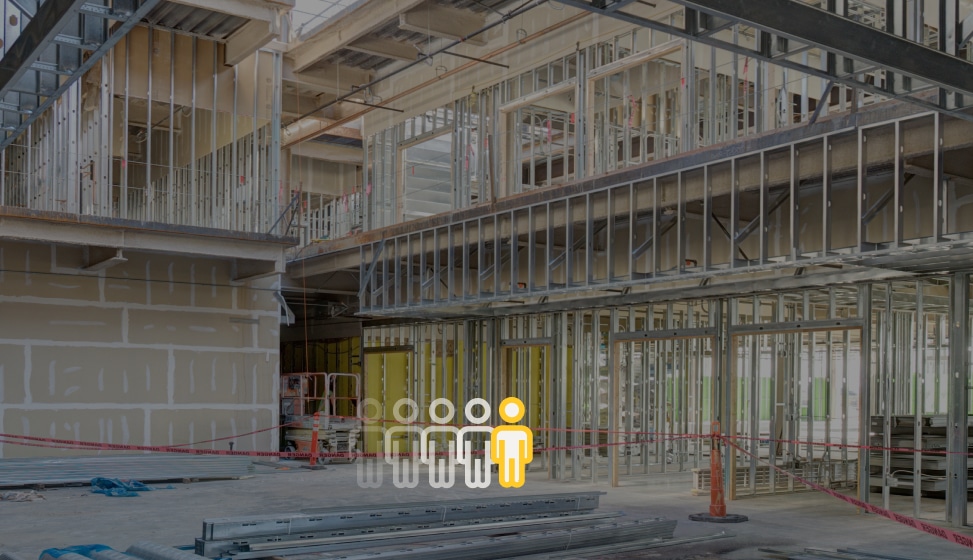
According to Buildots data, trades leave tasks incomplete over 10% of the time when they work in an area. These so-called ‘loose ends’ generate a lot of return visits. In a game of construction snakes and ladders, return visits would be the snakes. They’re insidious, unexpected and can throw projects completely off-track.
But why does this happen? And more importantly, how do we stop it?
The importance of flow
Flow is crucial on construction projects. In fact, it’s one of the core tenets of Lean Construction. In a nutshell, maintaining flow means optimizing the movement of materials, information and work throughout a construction project. The idea is to avoid conflicts and unnecessary ‘stops and starts.’
Return visits are the enemy of smooth project flow. Picture this. Your project is progressing smoothly, level by level or zone by zone. You might already be working on level 10 or 15 and feeling confident about the pace. Until unfinished tasks from earlier stages start creeping back into the picture, that is. Suddenly, you’re getting urgent requests. A subcontractor informs you that three pipes on level 3 were never installed and must be completed tomorrow to avoid delaying everything else. On level 4, ten ducts were left unfinished while waiting for measurements, and they now need to be installed before work can continue.
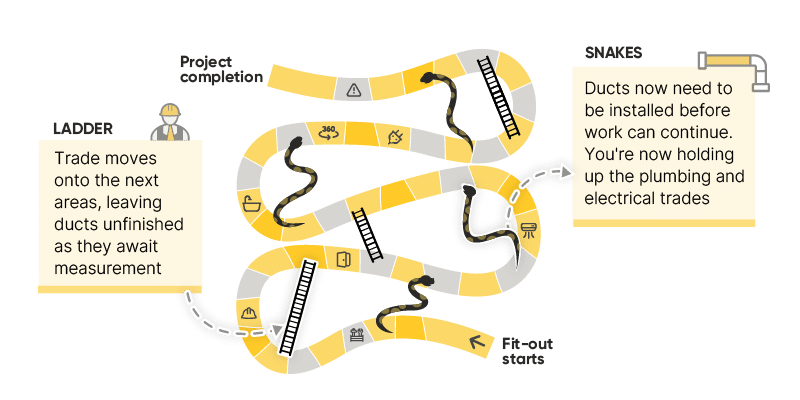
At this point, the steady momentum you had is disrupted. But a few minor fixes aren’t such a big deal, right? Unfortunately not.
The ‘domino effect’ of return visits
Yes, leaving something unfinished may enable you to progress more quickly in the short term. But in the long term, there can be a ‘domino effect’ of unintended consequences.
The truth is that return visits aren’t usually a ‘one and done’ situation. What starts as a single overlooked task can trigger a chain reaction. If a pipe wasn’t installed, the ceiling can’t be closed. If the ceiling isn’t closed, taping, mist coating and painting get delayed. Suddenly, instead of just one return visit to fix the pipe, you now have four or five separate trades returning at different times to complete their work.
Every return visit means your team has to stop what they’re doing, reassign workers, transport tools and materials and ensure the right access plant is available before moving forward again. What could have been a straightforward task is now a series of inefficiencies with multiple unintended consequences:
- Delays: Your project starts to fall behind schedule
- Cost overruns: Your cashflow is impacted as you’re forced to absorb the associated costs of return visits
- Accidents: One analysis of quality and safety data from over 500 construction projects revealed a 70% greater likelihood of injury during rework activities, with a whopping 39% of injuries occurring during rework.
- Unmade decisions: Some incomplete work requires decisions, design changes or RFIs. This adds another layer of complexity that can take weeks to resolve.
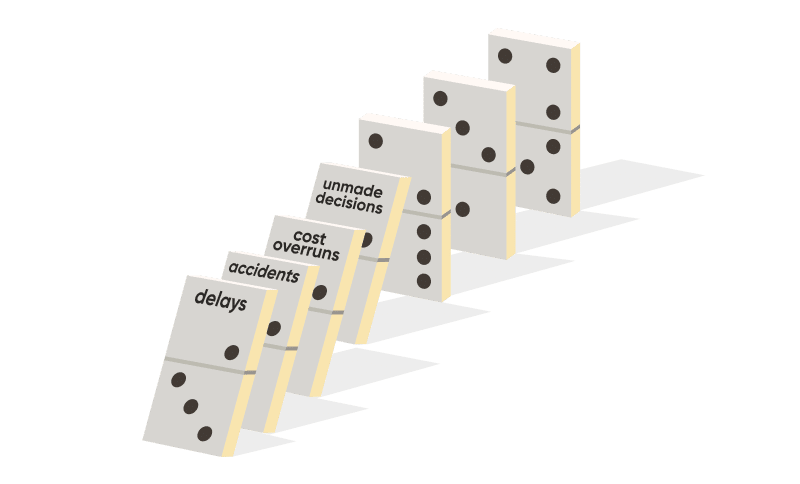
The solution: Early detection and immediate action
Unfinished work is a hidden project risk that you unknowingly carry. Often, it’s caught once it’s already too late. So, how can you ensure you’re spotting and addressing incomplete work before it forces you into firefighting mode?
Mistakes and oversights will always happen on projects. But the key is early detection, so you can get the right resources in place to resolve them (labor, materials, etc).
Buildots’ objective progress data gives you the ability to do this by identifying missing installations, grouping them into tasks, and tracking their completion by trades. We also help ensure nothing gets forgotten in the future. If you can’t install something immediately due to operational or technical constraints, you can create tasks with future dates.
With these improvements, teams can prevent unfinished work from accumulating, making it easier to maintain steady progress and stay within schedule.
If you're not actively managing return visits, they’re managing you. And that’s a risk no project can afford. Book a demo to learn more >>

